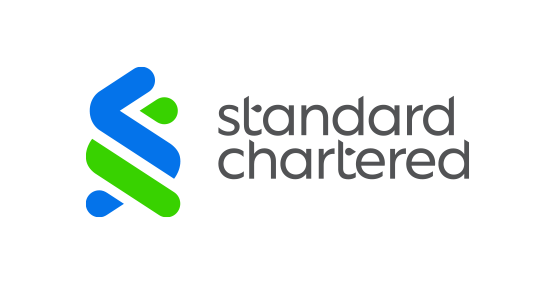
Can treasurers help Africa realise its growth potential?

Economic slowdown, food and fuel price inflation exacerbated by the war in Ukraine and the tightening of financial markets globally are weighing on growth in Africa and jeopardising efforts to alleviate poverty. The World Bank estimates that Sub-Saharan Africa saw a slowdown in growth from 4.1 per cent in 2021 to 3.3 percent in 2022, with a slow recovery in per capita income growth that is prolonging the Covid-19 recovery.
Despite the short-to-medium challenges, however, Africa’s potential remains undimmed. As the World Bank emphasises, “Sub-Saharan Africa, home to more than 1 billion people, half of whom will be under 25 by 2050, is a diverse continent offering the human and natural resources that have the potential to yield inclusive growth and eradicate poverty in the region.”
Corporations across all industries – and their treasurers – have a role to play in realising this potential and enabling communities across Sub-Saharan Africa to flourish.
Digitisation and economic recovery
With high levels of debt, increasing cost of borrowing and a decline in public savings during the pandemic, policymakers across the region have few mechanisms available to them to overcome the economic and societal challenges they face. However, efficient delivery of poverty relief, reduced financial infrastructure costs and a lighter regulatory burden will all help to lower the barriers to foreign investment and the efficient, cost-effective flow of goods, services and finance. With Kenya the first country to adopt digital wallets (M-PESA), countries across the region, particularly in West Africa, continue to embrace digital opportunities, whether digital wallets or electronic tax reporting and payments.
Treasurers are responding and adapting to changing trade, payments and investment opportunities. Viplav Rathore, Head of Cash Products, Middle East & Africa, Standard Chartered notes, “While the past few years has witnessed a trend towards treasury centralisation, some are now embracing a hybrid model that empowers local teams. This ensures a local presence and expertise in key countries.”
This can be particularly important given the speed of regulatory change and the need to leverage new business opportunities quickly as they arise. Other treasurers are looking at not just their treasury organisation, but also the cash and liquidity management structures that underpin their activities in the region. For example, as Viplav Rathore continues, “Some industries are considering shifts or greater diversification in their supply chains, including near-shoring, particularly those that have been exposed to the impact of the war in Ukraine. Treasurers are therefore looking at ways to support these strategies, including supply chain financing.”
Mirosha Brijmohan, Regional Corridor Lead, Transaction Banking Standard Chartered continues, “Regional hubs in South Africa are supporting treasurers to understand opportunities to manage liquidity more effectively across the region, rationalise bank account structures and make best use of regional treasury centres and shared service centres.”
Digitisation is a major element in governments’ approach to reducing costs and increasing transparency in financial systems, whilst increasing financial inclusion. Hybrid treasury models enable companies to understand fast-evolving opportunities for digital payments and collections, both domestically and cross-border. Mirosha Brijmohan comments, “Treasurers are seeking integrated solutions that enable them to manage both legacy and digital payment and collections methods through a single channel to optimise both operational efficiency and working capital.”
“Leapfrogging” traditional bank connectivity
The growth of digitisation is also apparent in the way that treasurers are seeking to connect with their banks. In Europe and North America, many treasury functions rely on host-to-host, SWIFT or web-based banking solutions for bank connectivity. In some cases, they may choose to supplement this infrastructure with APIs (application programming interfaces) to enable dynamic or real-time exchange of some data or transactions for specific purposes. In Africa, where legacy connectivity methods are less prevalent, the use of APIs is proliferating, particularly for activities such as tax payments, as it is typically cheaper and quicker to use APIs than set up host-to-host or SWIFT connectivity. Viplav Rathore explains, “The use of APIs is already well-established across the digital ecosystem. Their use in banking is no longer a differentiator but is fast becoming an industry-standard in the region as a means of rapidly exchanging transactions and data.”
The ability to exchange data dynamically is essential for effective working capital management. For example, real-time credit notification – as opposed to waiting for bank statement reconciliations – enables companies to deliver products and services immediately, therefore accelerating the entire supply chain.
On a continent that is characterised by both challenge and opportunity, companies rely on their banks to support them from end-to-end, providing the digital tools they need to standardise processes across the region, adapt to changing supply chains and optimise working capital whilst navigating the unique conditions in each market.
Sustainable business for sustainable societies
But while companies, multilaterals and governments are all focused on the immediate demands posed by high levels of food insecurity, income inequality and economic fragility, they are not ignoring their responsibilities to help improve environmental and social conditions and reduce vulnerability to climate, biodiversity and social crises. Sustainable financing has a major role to play in this. As the World Bank highlights, “Evidence indicates that financing adaptation to climate change will be more cost-effective than financing increasingly frequent and severe crisis response, disaster relief, and recovery pathways.”
Marion Reuter, Regional Head of Transaction Banking Sales UK/Europe concludes, “Companies recognise that they must promote and embed sustainable business practices both in their own organisation and across their supply chains, from large suppliers through to small-scale farmers and producers. Solutions such as sustainable supply chain financing and other forms of sustainable lending can play a major role in this.”